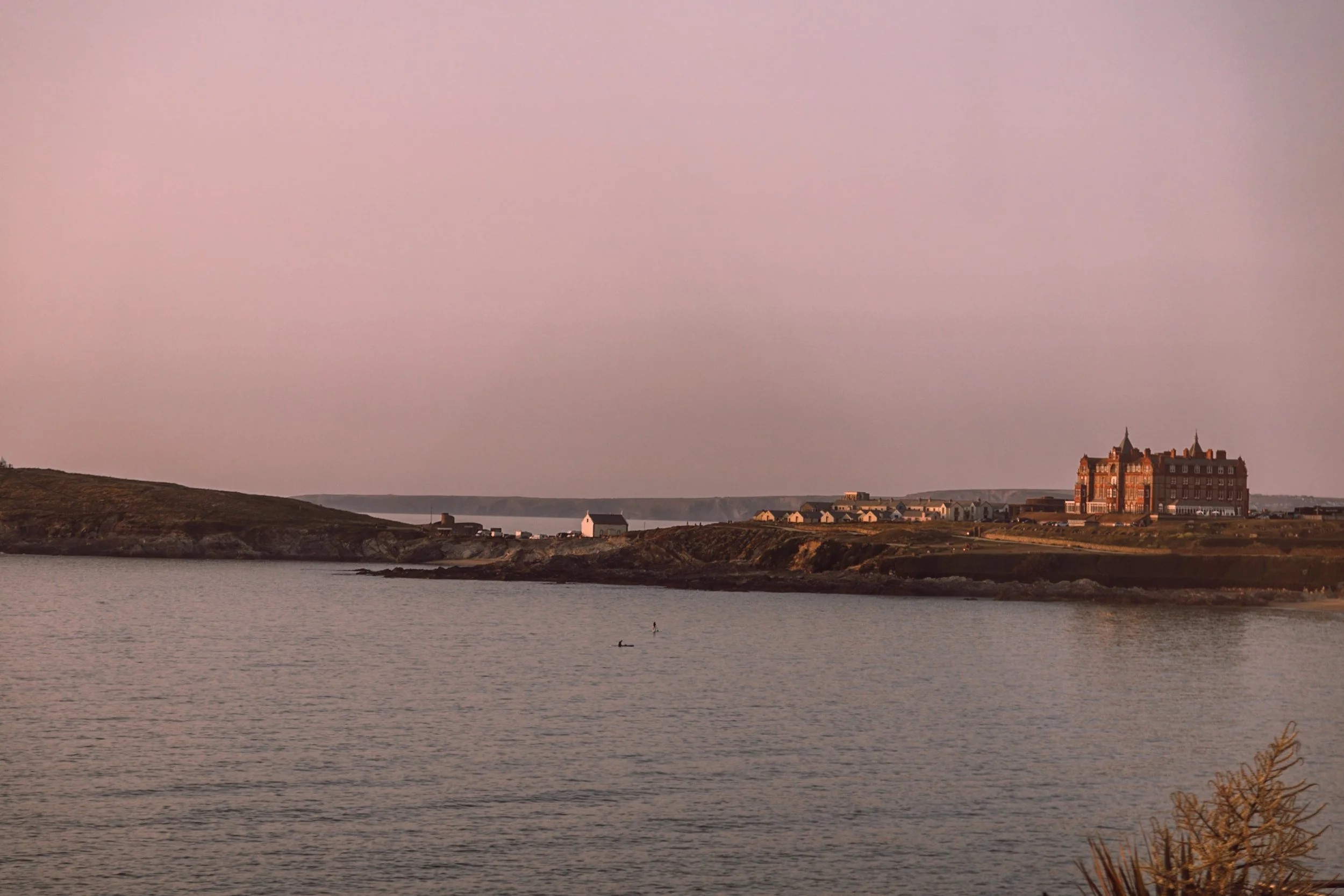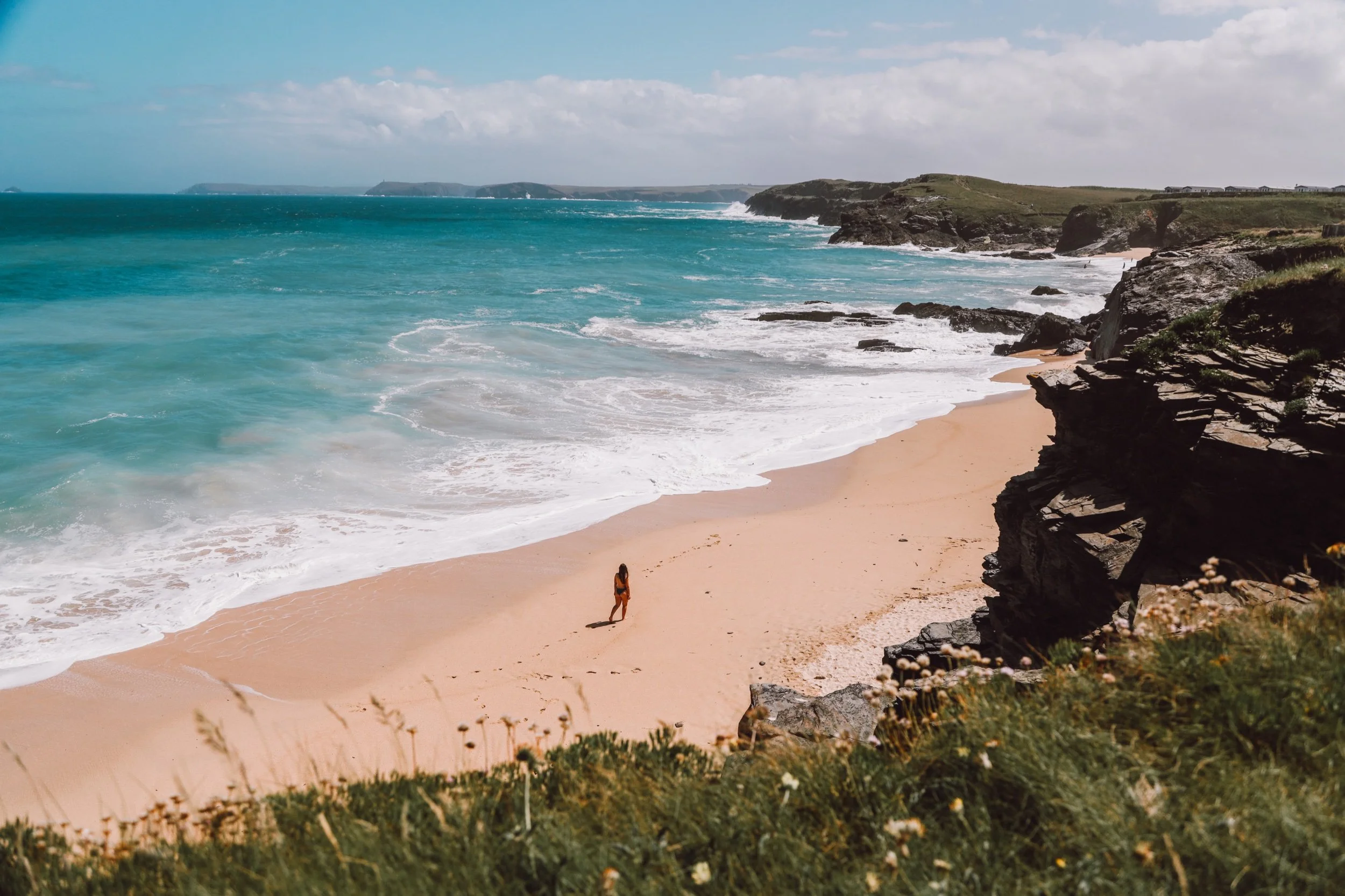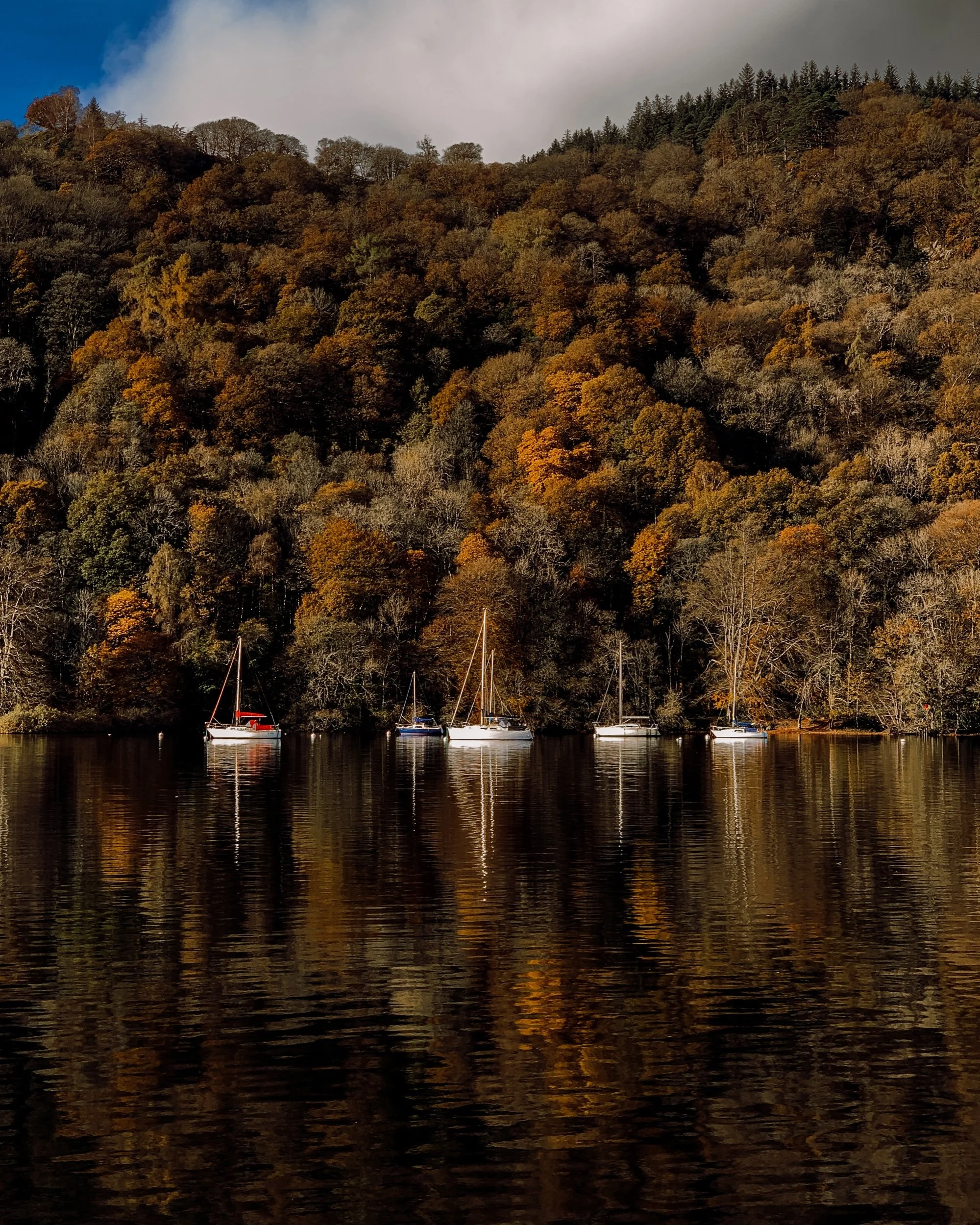Exmoor National Park is one of the least visited national parks in the UK, located in North Devon and Somerset, with scenic roads making it a fantastic place for a road trip either by campervan or car, cruise along the coast for unique landscapes and discover hidden coves.
We’ve put together the ultimate driving route, including all of the essential Exmoor National Park highlights such as the best places to stop along the way from beautiful beaches, delicious food, nature spots and quaint harbour towns. The landscape of Exmoor National Park is unique, offering coastal adventures, unbeatable scenic walks and secluded swimming spots.
We’ll cover everything you need to know when driving around Exmoor National Park, including a detailed driving route perfect for a campervan road trip including the best campsites to park up for the night. This itinerary is tailored for a long weekend, a total of 3 days with easy walks around Exmoor and will answer the questions you might have about wild camping in the National Park and what you need to know before driving in Exmoor.
Exmoor National Park Road Trip Map
The map below is interactive and shows all the places mentioned in the Exmoor National Park road trip guide. Use the plus and minus signs to zoom in and out of the map. Download the map onto your phone for use when you don’t have internet or limited signal.
Is Exmoor National Park worth visiting?
The perks of visiting Exmoor National Park are that throughout the year there are much fewer visitors when compared to more popular locations. Whilst it is not one of the most popular UK National Parks to visit, this does not mean it is not worthwhile visiting. You can enjoy the quiet space of the outdoors without massive crowds, even during the summer months.
The start of the South West Coast Path is found in Exmoor National Park in Minehead, Somerset. Exmoor National Park is found within both the counties of Devon and Somerset and the Bristol Channel lies in the northern part of the park. The variety of diverse landscapes within Exmoor make it worth a visit with sweeping coastal scenes, sheer cliffs and hidden coves.
The wildlife attracted to these diverse landscapes ranges from wild roaming ponies on the open moorland to nesting guillemots on the soaring cliffs. The Exmoor ponies freely roam Exmoor National Park, as it provides the ideal habitat for this rare breed.
Can you wild camp in Exmoor National Park?
Traditionally, wild camping is usually referred to as camping outside of a designated campsite and sleeping in a tent in nature. This can be great fun especially on multi-day hikes or for a night sleeping under the stars undisturbed by the sounds of towns and cities. In recent years, a growing popularity of campervans as a popular choice for camping has been evident across the UK, especially since Covid with the ability to be self-contained.
In England, wild camping laws also apply to campervans, as the majority of land in England is under private ownership you must obtain landowner permission and you must adhere to the countryside code by leaving no trace. Be considerate of how you park, allowing other visitors to use car parks, especially if you are in a large campervan or motorhome.
Whilst camping in Exmoor you must not light campfires or BBQs near open moorland, fires can spread very quickly in hot temperatures and dry conditions. If you are unsure, read the countryside code for guidance.
If you’re looking for wild, off-the-beaten-track, off-grid sites it’s worth checking out Wild with Consent, who offer unique wild locations suitable for campervans which you can enjoy all to yourself surrounded by nature. There are no facilities on these sites such as showers and toilets so you must be self-contained.
What is the best way to get around Exmoor National Park?
The best way to get around Exmoor in our opinion is by campervan, you can have everything with you as you explore this stunning national park, giving you the ultimate flexibility and freedom to enjoy this beautiful landscape.
If you don’t own a campervan, why not hire a campervan for your trip to Exmoor? If you’re thinking of buying a campervan in the future this is a great way to get a taste of van life to try before you buy. We’ve tried out many motorhomes and campervans in the past and loved to experience different layouts, designs and sizes, like Airbnb on wheels.
Check out our summer road trip essential packing list as a reminder of what you’ll need to bring with you for your Exmoor National Park road trip.
What to know about driving around Exmoor National Park
Driving around Exmoor National Park is a great way to explore the area and it is worthwhile knowing a few things before you set off in your campervan to this beautiful part of England. Exmoor is well connected with several A and B roads, making it easy to navigate and drive around with ease.
The landscape of Exmoor National Park has undulating hills and is home to the steepest A road in England, Porlock Hill with a gradient of 25% in places. If you are driving a heavy vehicle, it is recommended to avoid this hill or approach it from Lynmouth to Porlock where you will descend the hill instead of climbing it.
There are many narrow roads in Devon and Somerset, so it's worth familiarising yourself with driving on country lanes if you are used to driving around towns and cities. Drive slowly on narrow roads, especially where hedgerows are high and you can’t see around the corner and anticipate you will meet oncoming traffic, don’t drive in the middle of the lane on corners.
If you do come across traffic on a single lane, you may have to reverse or pull into a nearby layby to let them pass. There are blue signs at the start of narrow lanes which will say ‘unsuitable for caravans or long vehicles or HGVs’. Most of the time we avoided roads with these signs, especially the road which approaches Heddon Valley from A39 - more on that later!
The A39 and A396 are the main A roads which cut across Exmoor from West to East and North to South of the park with B roads connecting us through the centre. If you are driving an electric campervan, there are multiple charging points across Exmoor National Park to use.
Take care especially when driving on the open moorland, you’ll come across grazing sheep, cattle and if you’re lucky wild Exmoor ponies which may cross the road without hesitation so stay alert whilst driving in Exmoor National Park.
DAY 1 - Woolacombe, Broadsands Beach and Coombe Martin
Morning
The start of your epic Exmoor road trip starts just beyond the western tip of Exmoor National Park. Woolacombe is technically just outside the national park by only a short distance and in 2023 was designated the 12th World Surfing Reserve making it a worthwhile visit whilst in North Devon.
There are many surf schools and surf shops that provide surfboard, wetsuit and bodyboard hire to make the most of the perfect waves at Woolacombe Beach. The beach is over two miles long and is an award-winning beach, located in an Area of Outstanding Natural Beauty where there is a large expanse of sand dunes home to a variety of wildlife, Red Cattle graze the dunes which allow for a diverse display of plants in the spring and summer months.
For parking The Esplanade car park has automatic barriers, so once you enter you will have to pay and is one of the most expensive places to park, alternatively park along The Esplanade road which is right on the beachfront and is pay and display. Head to the Porthole for lunch on Marine Drive with seasonal ingredients serving sandwiches, soups, salads, cakes and ice cream with a bonus of serving dog-friendly ice cream.
Afternoon
In the afternoon, head to Watermouth Valley camping where you’ll be staying the night. This campsite has some of the best views of the Exmoor coastline and is conveniently located next to one of the most beautiful beaches in the area, Broadsands Beach.
If you have kayaks or paddle boards you can launch from the Watermouth Cove Holiday Park where you can access Broadsands Beach and explore this wonderful stretch of coastline in North Devon. There is access from the South West Coast Path to Broadsands Beach and there are several steep steps which make it a bit of an adventure, we’d recommend packing light.
In the evening return to the campsite and enjoy warm showers before heading to Combe Martin for fish and chips on the beach. An alternative option is to book a table at the fine-dining Seacliffe Restaurant at Sandy Cove Hotel with impressive ocean views and delicious food. Return to your cosy campsite for the evening ready for the next day of adventure.
STAY | Watermouth Valley Camping Park
DAY 2 - Heddon Valley, Barnstaple Railway and Valley of the Rocks
Morning - Heddon Valley
Warning: When driving to Heddon Valley do not approach it from the A39 on Broadoak Hill past Killington, there is a blue sign that says unsuitable for caravans but in our medium wheelbase Ford transit (just less than 6metres long) it was a struggle and one of us may have had a breakdown over driving down this lane.
There is a very narrow point which after speaking to a local, mentioned many have driven down this lane in their fancy sports cars and managed to scratch them and somehow we managed to get through without a scratch.
We’d recommend driving to Heddon Valley from Barnstaple along the A39 turning left on the A399 and turning right towards signs to Trentishoe or Heddon Valley. This route is regularly used by buses and makes it a much more enjoyable experience!
Heddon Valley is a National Trust site, a beautiful wooded glen in a peaceful setting where the River Heddon carves through the valley until it reaches the ocean. There is a limited phone signal in the valley, so it’s worthwhile downloading Google Maps before arriving.
When we visited with our campervan, the National Trust were trialling campervans to stay the night, which is no longer possible. We enjoyed a peaceful night by the river and enjoyed freshly cooked pancakes for our anniversary. There is a pay and display car park and a visitor centre which sells gifts and ice cream.
There are numerous walks from Heddon Valley car park, we walked along the River Heddon under the ancient oak trees until we reached Heddon’s mouth. There is a pebbly beach, sheltered by the neighbouring cliffs and there are paths from here that take you to Woody Bay (we’ll be visiting this later on the road trip).
The National Trust has made the paths very accessible with the option to rent a mobility scooter to explore dedicated trails made for them. It’s excellent to see places in nature that are created with accessibility in mind, especially for those who wouldn’t normally be able to get out into the heart of nature.
After your walk, we’d recommend having a drink at the Hunters Inn which is a beautiful traditional country Inn where you can stay the night. Or if you have brought a packed lunch, enjoy the many picnic tables in the car park.
Lynton and Barnstaple Railway
Channel your inner Francis Bourgeois (if you haven’t heard of this British icon, go and google him now and thank us later) by visiting the Lynton and Barnstaple Railway for a scenic ride across Exmoor National Park. Hop on board and step back in time to experience Victorian steam trains at their prime and have a chance to ride on the only remaining narrow gauge railway in the UK.
As you arrive, you will purchase your tickets from the Ticketmaster and you’re given beautiful card tickets which grant you access as a passenger to either the main carriage or you can pay a bit extra for a fancy luxury first class seat. If you purchase a first-class ticket this can only be used once, whereas a standard ticket allows you to ride the train as many times as you’d like. Check opening times before visiting and note that it is not open on Mondays and Fridays.
Valley of the Rocks
A must-see when visiting the Exmoor National Park is the Valley of the Rocks is a unique geological wonder and is located between Lynmouth and Woody Bay. An extraordinary valley surrounded by rocky cliffs and runs along the coast, providing some of the most breathtaking views in Exmoor.
Keep your eyes peeled for the resident wild goats who roam the rocks and are found in the most exposed places along the coast. These goats have been known to live in the Valley of the Rocks for the past hundreds of years and are even mentioned in 1086 in the Domesday Book (Britain’s earliest public record).
If you have time before sunset, take a walk along the coast above the rocks which will give you a wonderful vantage point of the valley and the cliffs towering over the Bristol Channel. It’s the perfect place to end the day, watching the sky turn beautiful pastels or a warm glow, with many spots to sit on the rocks and watch the sun go down. Finish the evening with a visit to the Fox and Goose in Parracombe for dinner, a cosy pub serving heart-warming, comfort food.
STAY | Exmoor Coast Holidays at Caffyns Farm, Longlands Luxury Glamping
DAY 3 - Woody Bay, Lynton and Lynmouth
Woody Bay
The uneven and wild coastline of Exmoor makes it difficult to access its many hidden and secluded beaches. Many of which are only accessible by boat from the ocean, one of our favourite beaches we came across after Broadsands beach, is the tucked-away Woody Bay.
Woody Bay is accessible from the coast, the walk to the beach is worth the effort. It’s a steep descent from the top of the small car park (see map for exact location), where you can either follow the road down, through the ancient oak trees until you reach the ocean and a platform above will show you a sneak preview the paradise of Woody Bay below.
The South West Coast Path traces along the coastline just above Woody Bay, if you follow the path it will not take you to the beach but to Heddon Mouth, make sure to follow the wooden sign to the beach. You’ll pass several fairytale-like houses on your way to this magical beach. A charming tidal pool awaits you on the beach and a tumbling waterfall - could this be heaven?
Lynton and Lynmouth
For a truly unique experience, take a ride on the Victorian water-powered railway that takes you from the heights of Lynton for a thrilling ride down to the sea-level harbour village of Lynmouth. Opened in 1890, this Victorian invention where two green cars are joined by a steel cable and the car at the top is filled with water which gives enough weight to pull it down and in return lift the other.
Lynmouth is also known as ‘Little Switzerland’, a picturesque village which is one of the most beautiful places to visit in Exmoor National Park. The Lyn River meets the ocean in Lynmouth, so wander the streets and take time to browse the local shops. There are tea rooms, cafés, cosy pubs, and art studios with the chance to have fish and chips on the harbour front.
On route home, you’ve got to try your chances at spotting the Exmoor Pony, the wild horses that roam the open moorland. There are several locations where your chances to see them are more likely, but you will not be guaranteed to see them. A few of the best places include; Winsford Hill, Dunkery Beacon, Prayway Head, Anstey Gate/Molland Moor, Haddon Hill and Porlock Hill Viewpoint.
STAY | Exmoor Coast Holidays at Caffyns Farm
STAY | Exmoor Coast Holidays at Caffyns Farm
If you enjoyed this article then pin it for later
This post may contain affiliate links, which means if you purchase through these links, we may receive a small commission at no cost to you. Thank you for supporting our website.












































